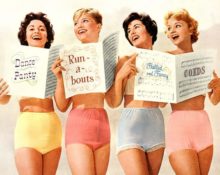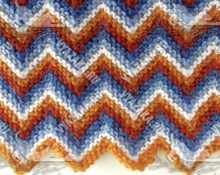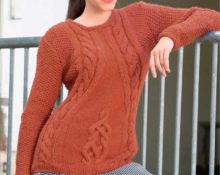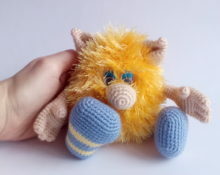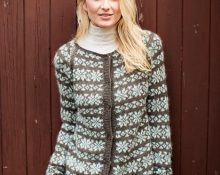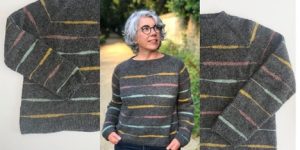
The easiest and fastest knitting option is strip knitting. A huge plus of such products is their versatility; they will look great in the wardrobe of a woman, man or child. If you knit a blanket in this way, it will always attract attention.
You can use leftover yarn for strip knitting. The range of colors and the number of colors can be different and depend on the availability of one or another shade and the imagination of the craftswoman.
The yarn can be of different composition and thickness, this will additionally add zest to the finished product.
Knitting can be done either with knitting needles or with crochet, depending on what is more convenient to work with and what the craftswoman is used to.
When changing colors, vertical broaches will appear; their size will depend on the parameters of the individual element.
The direction of the stripes may also be different; they can be horizontal or vertical, as well as inclined or diagonal.
It is worth noting that to adjust the color of, for example, a pullover on each element, you will have to use much more yarn than with regular knitting without stripes.
Selection of knitting needles
The thicker the thread, the larger the knitting needles should be. It is also important to consider the density of the finished product; the denser it is, the smaller the size of the knitting needles you need to choose.
To evenly distribute the load on the knitting line, it is better to choose circular knitting needles.
Yarn
In terms of composition, it is better to take a material consisting of half wool and half acrylic. The finished product will be easier to care for due to the inclusion of acrylic, and at the same time it will be soft and natural due to the presence of wool in the composition.
You can take merino with cotton, it will be more expensive and much more difficult to care for, but the product will be incredibly soft and pleasant to the body.
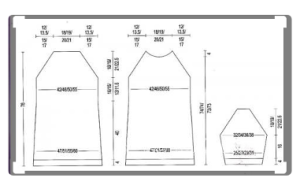
The composition of the finished product may consist of:
- Simple alternating stripes.
- Complex stripes consisting of elements of different colors and sizes.
- A relief product involves a change in texture throughout the entire canvas.
- Stripes in patchwork style.
- Stripes of bright and contrasting colors.
Knitted blanket
First you need to decide on the colors of the blanket, size and overall composition.
The edging or edge of the blanket can be knitted with an elastic band or rice.
The overall composition in our example will consist of squares of different colors, knitted with stockinette stitch and purl stitch. Such a blanket will look the same on both sides and this is a definite plus.
If you don’t want to break the thread when changing colors, you can use the method of pulling along one side. The size of the blanket is 94x80 cm.
The composition consists of two colors – red and white.The edging is made with double rice knitting, each strip including two alternating squares. One is knitted in stockinette stitch, the other in purl stitch.
- 1st row: cast on 222 stitches.
- 2nd row: remove the edge stitch and alternate one knit stitch and one purl stitch.
- 3rd row: repeat all the loops according to the drawing.
- 4th row: we knit it in the reverse way: if it was purl, then we knit it with the front one and vice versa.
- 5 row: repeat all the loops according to the drawing.
- 6 to 10 row We also knit with double rice.
Row 11: We knit 10 loops with double rice and start the square, knitting twenty loops with knit stitches, then twenty loops with purl stitches, finishing 10 finishing loops with double rice.
Interesting: There is a very simple technique for soft color changes. We begin to weave a thread of a different color from the previous row when we knit the finishing edge loop. Thus, a new row begins with a new color; there is no “step” of color transition, which is formed if the standard transition method is implemented.
Usually the color change starts from a new row, but in order for it to look organic in the finished product and start from a new row, it is necessary to use a clever method.


 0
0